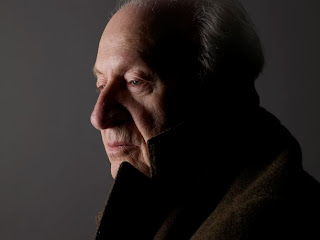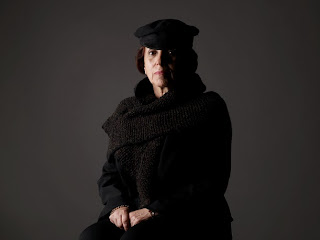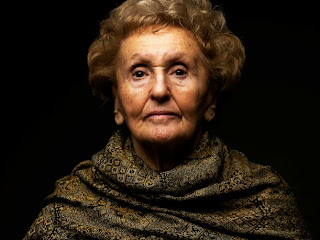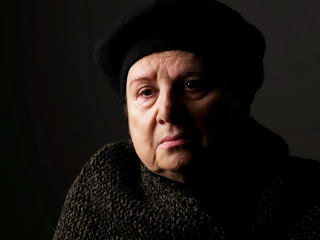Together with her parents, brother, and grandmother, Paula was rounded up and herded into the ghetto. They were allowed to take only what they could carry. Paula’s father managed to escape from the ghetto and joined various partisan units to fight the Nazis, all the while formulating a plan to save his family. Jealous neighbors, desirous of his ranch and the land it stood on, instigated a search for him. In their efforts to find him, the Nazis arrested Paula’s mother and brutally interrogated her to reveal her husband’s whereabouts. Since she had no idea where he was hiding, the torture brought no results; the Nazis kept her as an interpreter for a month and then shot her.
By then, Paula’s father had connected with the Bielski partisans and made arrangements to smuggle Paula and Isaac out of the ghetto with the help of a non-Jewish business colleague. Sealed in a large water barrel, Paula (age 7) knew that they could not make a sound or it would mean certain death. She took extreme care to make sure that Isaac, who was just 3 years old, stayed absolutely still. Paula and her surviving family stayed with the Bielski partisan group throughout the war, although there were times when they could not travel with them due to the harsh winter conditions, keeping themselves hidden in forest shelters instead. Although she was just a young girl, Paula contributed actively to armed resistance against the enemy, using her small fingers to pack explosives into yellow bricks, which were later used to blow up and derail Nazi supply trains.
When the war finally ended more than three years later, Paula’s father refused to go back to Novogrodek and the family instead went to Lida before crossing over into Czechoslovakia. Aided only by their wits and the kindness of strangers, the family made their way to the American Zone in West Germany. Paula learned English in the DP camp there. In 1949, on the cusp of becoming a teenager, Paula and her family moved to Chicago to join relatives, where Paula was finally able to hone her natural talent as an artist while attending high school.
As a child, Paula’s most prized possession was a box of colored pencils with which she would draw for hours. Although Paula did not begin painting professionally until she retired from a career in retail, real estate and nursing home administration, she was always painting pictures in her head and had an overwhelming desire to act on this passion. In a journal she kept as a young woman, Paula wrote, “I hope I don’t die before I get to paint.”
The passion for creative expression ran deeply through the veins of both Paula and Isaac. Though they had successful careers in business, they always pursued their art. While Paula painted colorful landscapes, still-lifes, and Judaic themed canvases, Isaac used his beautiful voice to become a Cantor – an avocation that continues to this day. Moved by the majestic beauty of the Rocky Mountains, Paula relocated to Denver with her family in 1967.
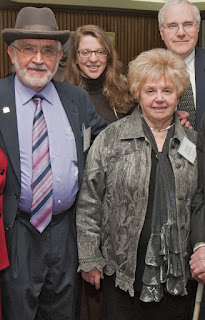 Paula’s art has been shown in galleries throughout Colorado and one of her painting hangs in the state capitol. After a childhood filled with dark images of horror and loss, Paula’s goal is to capture the beauty in life through her art with the bold use of color and imagery. Her catalogue can be viewed at paulaburger.com.
Paula’s art has been shown in galleries throughout Colorado and one of her painting hangs in the state capitol. After a childhood filled with dark images of horror and loss, Paula’s goal is to capture the beauty in life through her art with the bold use of color and imagery. Her catalogue can be viewed at paulaburger.com.Paula Burger has been speaking to students in middle schools, high schools and universities and to civic groups for over 20 years. She recently completed an autobiography about her experience as a child surviving in the forests during World War II, entitled “Temporary Pillows.” For more information, please email Paula at burgerart@gmail.com.







 Joseph Greenblatt was born in Warsaw in 1915. He learned about resistance from his father, an army captain who had fought for Polish independence during WWI. At eighteen, Joe enlisted in the Polish army as an infantryman, becoming an officer in 1938. In 1939 he was mobilized and sent to the Polish-German border. He witnessed the German invasion directly and fought for almost twenty days before being taken prisoner and sent to a German POW camp. It was in the camp that he began to establish connections with the newly formed Armia Krajowa (AK). The AK hijacked a German truck, transporting Joe to a hospital, freeing him and his fellow prisoners.
Joseph Greenblatt was born in Warsaw in 1915. He learned about resistance from his father, an army captain who had fought for Polish independence during WWI. At eighteen, Joe enlisted in the Polish army as an infantryman, becoming an officer in 1938. In 1939 he was mobilized and sent to the Polish-German border. He witnessed the German invasion directly and fought for almost twenty days before being taken prisoner and sent to a German POW camp. It was in the camp that he began to establish connections with the newly formed Armia Krajowa (AK). The AK hijacked a German truck, transporting Joe to a hospital, freeing him and his fellow prisoners.
